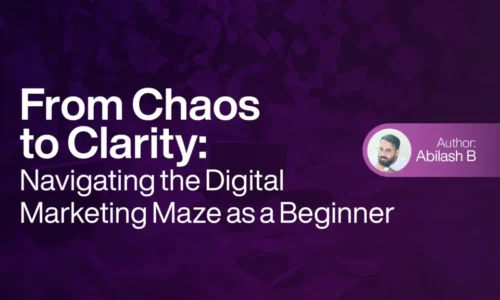The Key Impact of Audience Segmentation on Google Ads
Imagine entering a store, and feeling like every product is customized for your tastes and needs. That hit differently because it is more personal, engaging, and connected. This is the essence of audience segmentation in Google ads which creates a personalized experience for people and it makes you feel like it was created for you.
Google Ads is an online advertising platform that can potentially increase traffic on your website. It can help all sizes of businesses to reach their targeted audience cost-effectively. Cost-effectively in the sense that it is a method of pay per click which means you only pay when someone clicks your ad. In Google ads, you can set different types of goals like Sales, leads, website traffic, app promotion, awareness and consideration, local shop visits, and finally, a campaign without goals guidance. By differentiating goals into seven types, you can stick to your specific digital marketing objective.
But what about the audience? how do you know your ads are reaching the right audience at the right time? There comes the importance of audience segmentation. Instead of including every customer under one title, there is a detailed division of different types of customers which can ensure the effectiveness of your digital marketing campaign.
Table of Contents

What is audience segmentation?
Audience segmentation means dividing your targeted market into smaller and more specific groups based on factors such as interest, demographics, geographic location, and behavior. This segmentation allows you to communicate directly with the right group of customers. And it can also create a customized feel for the customers. In this era, the only way to capture your audience’s attention is personalization.
Why audience segmentation?
Relevance and engagement:
By doing audience segmentation, you are increasing the relevance of your message. People get more attracted by the ads that directly reflect their interests and needs. the more relevance they feel, the more engagement you get. The benefit of segmenting your audience in digital marketing is that you can ensure that each group gets messages that are relevant to them.
ROI:
Audience segmentation can help you spend your ad budget more effectively. When your ad is visible to the right audience, there is a high chance of achieving the campaign goal. Google ads work in the model of pay per click so you have to pay if your ad is clicked by someone. When your ad reaches the right audience, you don’t have to lose your money.
Personalisation:
The best way to build a strong customer relationship is personalization. Through personalization, customers get a customized feel. When you add a pain point or a specific need of a customer, it helps to build an understanding and connection.personalisation is a powerful tool in digital marketing.
Informed decision-making:
Audience segmentation provides valuable insights into the behavior and preferences of different audiences. By looking at this data, you can adjust your strategies and make smarter choices for your future digital marketing campaigns. For instance, if you find that a particular demographic responds well to certain ad copy, you can use this information to tailor your messaging across other segments.
Effective campaign performance:
When you target your ad to the right audience your ad to it can lead to better campaign metrics. The benefits are higher conversion rate,a higher click-through rate (CTR) and lower cost per acquisition (CPA) are common benefits. By delivering the right messages to right person increases the efficiency of a marketing campaign and that can make a campaign successful.
In Google ads, we get a list of audiences that is divided under three headings, such as detailed demography, affinity, and in marketing. Setting our targeted audience is the most important thing in Google Ads. You should first define what you want to achieve with your ad campaign and then research your audience before setting up audience segments.

How to Implement Audience Segmentation in Google Ads
Define your segments:
First, specify the criteria of dividing your audience. Such factors could include age, gender, interest, location, and past behaviors. Use the targeting options in Google ads to make and organize them effectively.
Craft Tailored Ads:
Create ads with visuals and copy that connect with each segment. Depending on the requirements and interests of each group, highlight different facets of your offering.
Monitor and optimize:
When you start to run your ad, keep an eye on the performance of your segmented campaigns. Track the performance of the campaign and figure out which segment is doing well. You can use this data to improve the quality of a marketing campaign.
Remarketing:
Build remarketing strategies that can potentially help you to bring back those users or customers who have engaged with your website or service it reminds these users about what they did or what they were interested in to push them towards making the purchase.
Conclusion
Audience segmentation in Google ads is a strategy that brings a human touch to digital marketing. To create a successful and meaningful campaign, you should understand your audience, find out the pain points, and address the unique needs of different customers. This personalized experience can drive more results and increase engagement.



